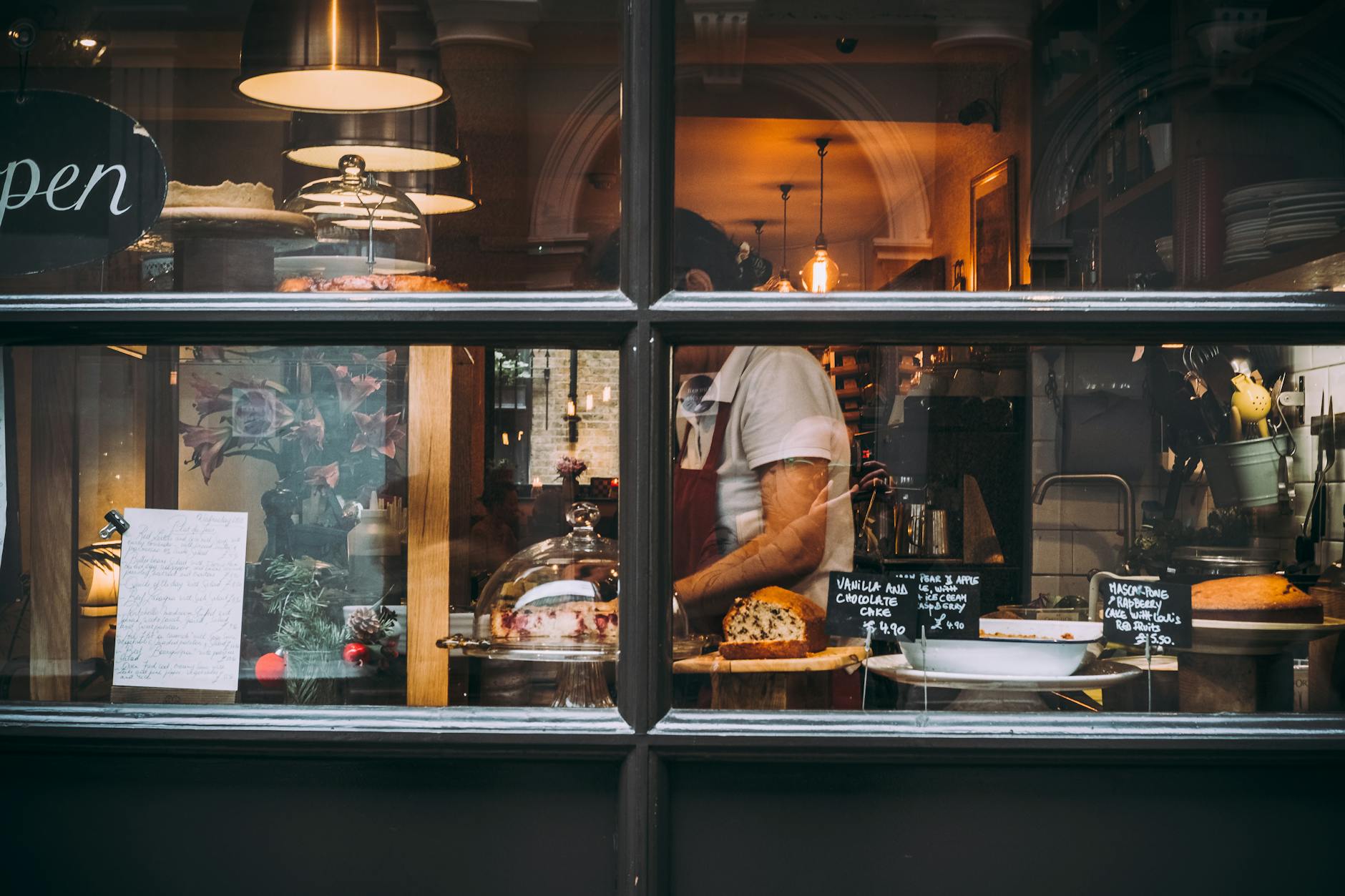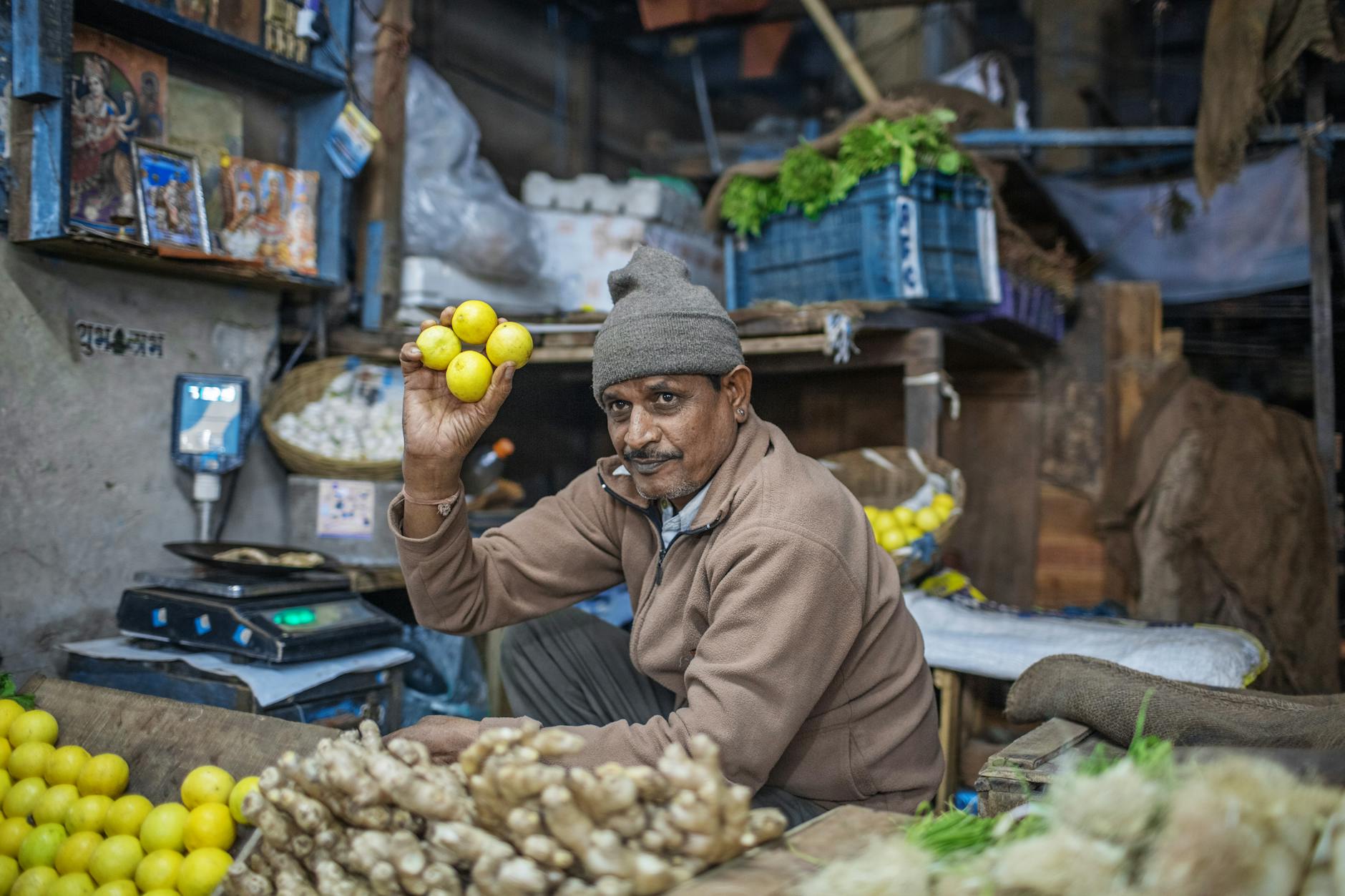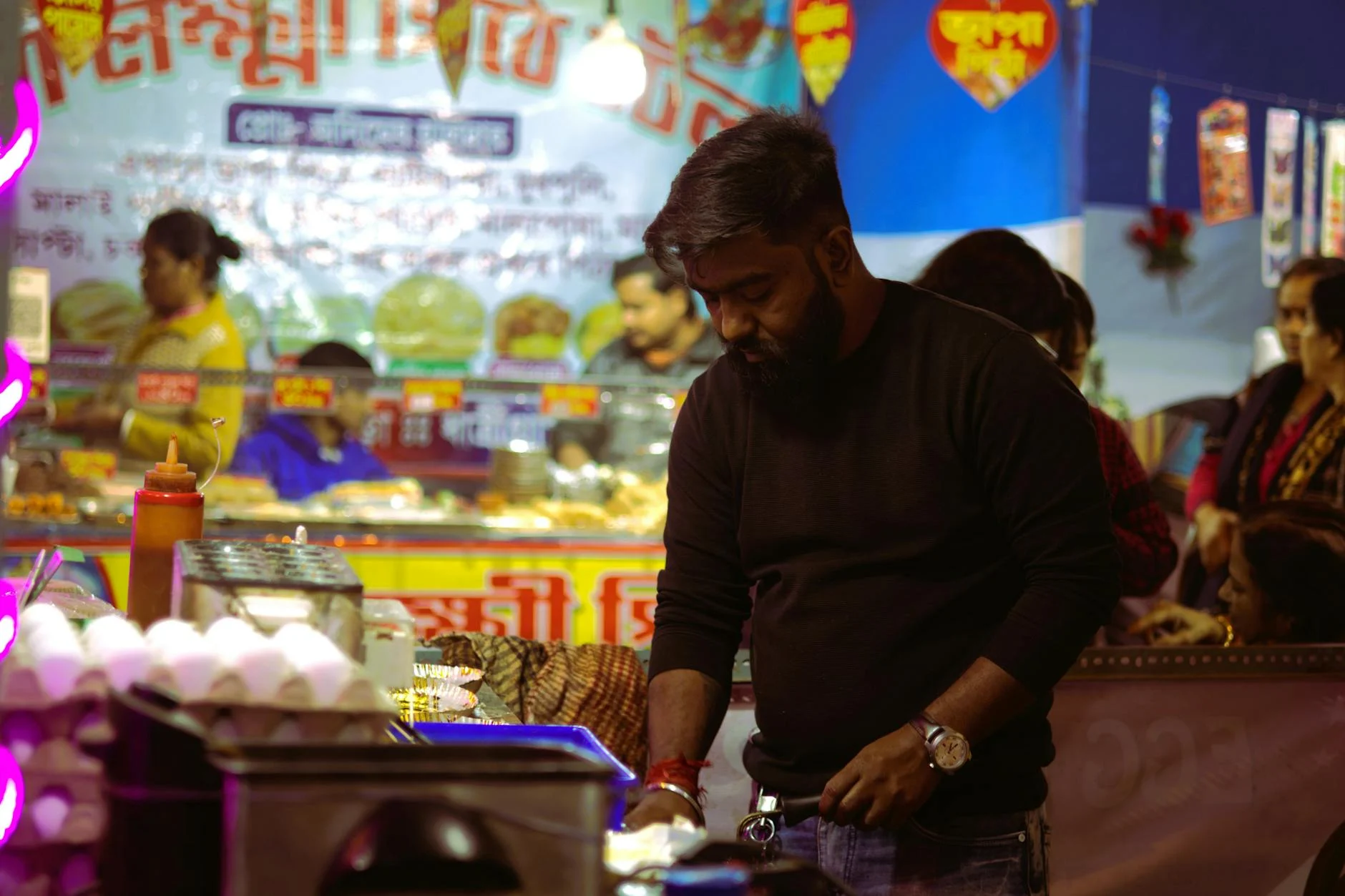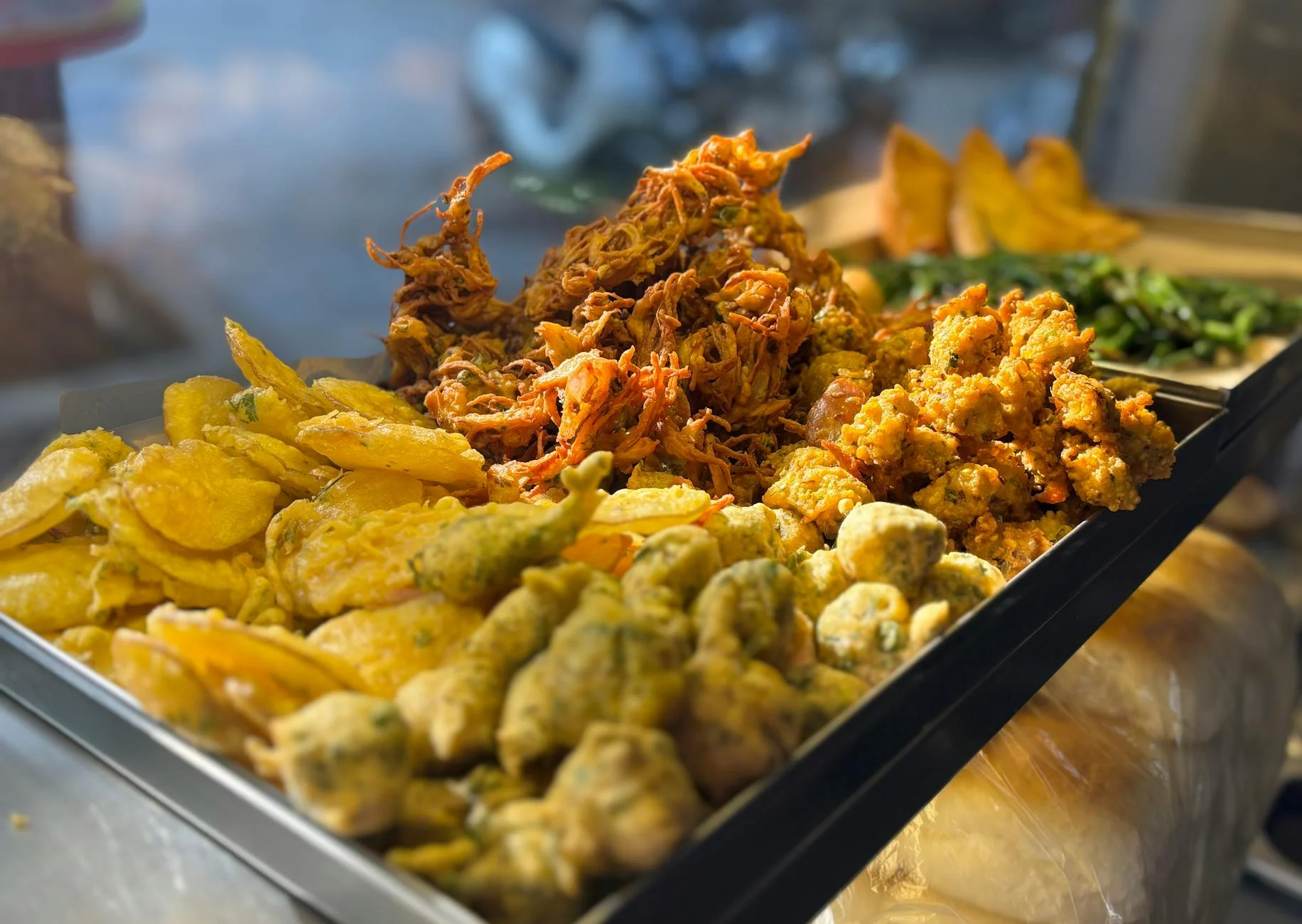Exploring Indian Street Food: A Flavorful Journey [2024 Updated]
When was the last time a meal offered you an adventure? Indian street food is a feast for the senses, a vibrant tapestry of flavors, colors, and aromas. From the bustling streets of Mumbai to the winding lanes of Delhi, this culinary tradition offers much more than just food. It’s an experience, a deep dive into India’s rich culture and history. Each dish tells a story, each bite transports you to a different part of the country. Whether it’s the spicy kick of a pav bhaji or the sweet relief of a jalebi, street food in India holds the power to delight and surprise. Dive in, and you’ll discover why it’s an irresistible journey everyone should take.
The Essence of Indian Street Food
Indian street food captures the heart of a nation through its vibrant colors, tantalizing aromas, and diverse flavors. It’s where spices play their magic, and every bite tells a story of a rich cultural heritage. Imagine a bustling street scene where the air is flavoured with the seductive smell of curries and grilled meats. Indian street food isn’t just food; it’s an experience, a kaleidoscope of taste that brings people together, whether under the warm embrace of the sun or under the twinkling stars.
Indian Street Food – The Healthy Edition
Contrary to the usual perception of street food being unhealthy, Indian street food offers a variety of nutritious options. Think you’re stuck with greasy snacks? Think again. Options like Dhokla, Idli, and Dahi Vada are not just delicious but are often steamed or fermented, making them a healthier choice. According to Times of India, dishes made with ingredients like sweet potatoes and chickpeas provide essential nutrients without compromising on taste.
Cultural Significance- Indian Street Food
Street food in India is more than culinary delight; it’s a reflection of India’s vast and diverse culture. Each region adds its own unique twist, turning street food into a canvas of tradition and diversity. As explained by Asian Studies, these culinary offerings are deeply tied to local festivals, regional tastes, and generations of passed-down recipes. Whether it’s the fiery spices of Kerala or the fragrant chaats of Delhi, street food mirrors the very soul of India’s vibrant communities.
 Photo by Nishant Aneja
Photo by Nishant Aneja
A Mini Guide to Indian Street Food
Feeling adventurous? Here’s a guide to must-try street foods that will have your taste buds dancing:
- Vada Pav: Often dubbed the Indian burger, this spicy potato mash is sandwiched between soft buns.
- Pani Puri: Hollow, crispy balls filled with spicy tamarind water.
- Pav Bhaji: A spicy vegetable mash served with buttery bread.
For a deeper dive into these delights, Travel with Kat provides a comprehensive look at the staple treats that line India’s streets.
Best Indian Street Food in London
Craving Indian street food but in London? You’re in luck. The city offers an exciting array of Indian street eats that capture authentic flavors. London’s Brick Lane and Southall are famous hubs for food enthusiasts looking to savor authentic delights such as Kathi Rolls and Bhel Puri. Restaurants like Gymkhana are recommended for their twist on classic Indian street food flavors.
Best Indian Street Food in Mumbai
Mumbai’s street food scene is legendary, a colorful explosion of flavors that can’t be missed. Some notable mentions include:
- Vada Pav: As mentioned earlier, it’s a classic must-have!
- Misal Pav: A spicy melange that’s perfect for those who love a kick.
- Bombay Sandwich: A delightful, green chutney-filled sandwich.
According to Timeout Mumbai and Travel Triangle, these street-side offerings are essential to experiencing the true spirit of Mumbai.
Flavor Profiles
What makes Indian street food stand out is its intricate blend of spices. The balance of sweet, sour, spicy, and savory creates an unforgettable flavor profile. From the smokiness of the tandoor to the tangy zest of tamarind, every ingredient plays its part. According to Veggie Planet, Indian street food employs a vast array of spices such as Cumin, Turmeric, Cardamom, and Black Salt to craft its unique taste.
Each bite is an invitation to explore new dimensions of taste—a flavorful journey that transcends borders and brings together people from across the globe. Whether you’re on the streets of Delhi or the lanes of London, Indian street food continues to captivate and inspire.
Popular Indian Street Foods
Indian street food isn’t just about satisfying hunger; it’s a joyful explosion of flavors, textures, and aromas. Each street food tells a story of its region, culture, and people, creating a culinary mosaic that captivates both locals and travelers. Dive into some of the most beloved Indian street foods that effortlessly bridge tradition and taste.
Pani Puri
 Photo by Davide Baraldi
Photo by Davide Baraldi
Pani Puri, also known as Golgappa in some regions, stands as an iconic symbol of Indian street food. It’s a small, crispy, and hollow puri filled with tangy tamarind water, mashed potatoes, and chickpeas. The real magic lies in its explosive flavors – a mix of spicy, tangy, and sweet, all in one tiny bite. Its appeal is almost universal across India, where you’ll find people of all ages eagerly lining up for this delightful treat. For more insights, read about Pani Puri’s ingredients and popularity.
Vada Pav
Vada Pav is famously known as the “Indian Burger.” Originating from the bustling city of Mumbai, this dish comprises a spicy potato patty sandwiched between a bun, accompanied by chutneys and fried green chilies. It’s more than just a snack; it’s an integral part of Mumbai’s culture. Vada Pav mirrors the city’s soul – spicy, vibrant, and full of life. The cultural significance of Vada Pav reveals its deep roots in Maharashtrian identity.
Dhokla
Dhokla is a steamed, savory cake made with fermented rice and chickpea batter. Hailing from the western state of Gujarat, it’s a soft and spongy snack that offers a subtle yet savory flavor. Whether for breakfast, lunch, or a snack, Dhokla’s soft texture and mild taste make it a versatile choice for many. It’s often garnished with mustard seeds, curry leaves, and split chilies, adding a burst of flavor. Learn more about this delightful snack from Gujarat.
Chaat
Chaat is not a single dish but a universe of flavors. From Samosa Chaat to Papdi Chaat, this comfort food is a medley of crispy, tangy, and spicy components. The beauty of chaat lies in its regional variations. In Delhi, you might find Aloo Tikki Chaat, while Kolkata serves Puchkas, a version of Pani Puri. It’s like a culinary adventure with every bite offering a different taste and texture. Explore the variety of chaat dishes and their regional twists.
Bhel Puri
Bhel Puri is a crunchy, light snack that encapsulates the essence of Mumbai’s bustling beaches. It’s a mixture of puffed rice, chopped onions, tomatoes, tangy tamarind sauce, and sev (fried chickpea flour noodles). This crunchy delight is both satisfying and refreshing, making it an ideal snack for a sunny day. The perfect balance of flavors and textures gives it a unique place in India’s street food landscape. For more on Bhel Puri’s ingredients and crunchiness, click here.
Embarking on a journey through India’s street food scene is like embarking on a flavor-filled expedition, inviting you to savor the heart and soul of this diverse country.
Street Food Markets in India
India’s street food is a vibrant celebration of flavor, culture, and community. With bustling markets in cities like Delhi, Mumbai, and Bangalore, the streets are brimming with aromas and tastes that capture the heart of every food enthusiast. Let’s explore some famous street food markets and what makes them unique.
Chandni Chowk, Delhi

Photo by Anton Polyakov
In the heart of Old Delhi lies Chandni Chowk, a paradise for food lovers. This market is not just about food; it’s an experience. Walking through the narrow lanes, you’ll find a kaleidoscope of colors and scents that draws you in, like a moth to a flame.
What should you try? The choices seem endless, but here are a few must-tries:
- Paranthe Wali Gali: Famous for its fried parathas stuffed with everything from potatoes to paneer.
- Chaat: A tantalizing mix of spices, yogurt, and pomegranate seeds. Try it at Natraj Dahi Bhalla Corner.
- Jalebi: The Old Famous Jalebi Wala has been delighting taste buds for generations.
For a deeper dive into the food of Chandni Chowk, you can explore more about its culinary delights here.
Juhu Beach, Mumbai
Juhu Beach is synonymous with Mumbai street food. The beachside stalls don’t just serve food; they serve a slice of life in Mumbai. Imagine munching on a spicy Vada Pav with the sound of waves in the background. Pure magic!
Some iconic foods to try at Juhu Beach include:
- Pav Bhaji: A buttery, spicy vegetable mash that’s addictive.
- Pani Puri: Feel the explosion of sweet and tangy flavors with each bite.
- Bhel Puri: A crunchy, spicy snack that’s perfect for a casual beach stroll.
Delve into a more comprehensive list of what Juhu Beach has to offer by checking out this guide.
MG Road, Bangalore
Bangalore might be known as India’s Silicon Valley, but its street food scene on MG Road shows a different side. Here, traditional street food meets modern sensibilities, crafting a fusion that’s both thrilling and satisfying.
Highlights include:
- Dosa: Crispy on the outside, soft on the inside; often filled with spicy potato mash.
- Idli: Soft and fluffy, served with a variety of chutneys.
- Vada: Savory doughnuts made from lentils, perfect for dipping into sambar.
MG Road’s street food creatively blends the old with the new. For more on this culinary marvel, explore the offerings at the best street food spots.
So next time you’re in India, let your taste buds lead the way through these vibrant markets. Happy eating!
Health and Safety in Street Food
Eating street food can be a delightful adventure, a journey through flavors and cultures. But how do you ensure it’s also a safe experience? Prioritizing health and safety doesn’t mean giving up the joy of street food. With the right strategies, you can savor your favorite treats without worry. Let’s dive into the essential aspects of enjoying street food safely.
Choosing the Right Stall
Picking the right vendor is like choosing the perfect book from a bookstore. You want something reliable with a great reputation. How can you tell which stalls are trustworthy? Here’s a simple checklist:
- Cleanliness: Look for stalls where the vendor maintains a clean workspace. Are they using gloves and hair nets? Is the stall itself well-kept?
- Popularity: Often, a long queue is a good sign. It shows that the vendor has a regular customer base, indicating trust and quality.
- Freshness of Ingredients: It’s crucial to notice if the ingredients are fresh. Vendors who take pride in fresh produce are less likely to serve old or unsafe food.
- Location: Is the stall in a busy, reputable area? Vendors in crowded spaces are often more vigilant about health standards.
Want more tips on selecting a vendor? Check out guides like How To Safely Eat Street Food for detailed advice.
Food Preparation Practices
Watching how your food is prepared tells you a lot about its safety. Think of it like being a detective. What clues should you look for?
- Cooking Method: Ensure that the food is cooked thoroughly, especially meat. Avoid undercooked items to reduce the risk of foodborne illnesses.
- Utensil Usage: It’s important that vendors use separate utensils for raw and cooked foods to prevent cross-contamination.
- Storage Conditions: Notice if cold foods are kept on ice and hot foods are kept warm, which are both crucial for preventing bacteria growth.
- Temperature Checks: Foods should be kept at their optimal temperatures. If it’s supposed to be hot, it shouldn’t be lukewarm when served.
For more insights on safe food handling, explore resources like Food Safety Knowledge.
Venturing into the delicious world of street food doesn’t mean compromising on safety. With a keen eye and a bit of caution, you can fully dive into the rich tapestry of tastes that street vendors have to offer. After all, food is not just about nutrition; it’s about experiencing the world, one bite at a time.

Photo by Laura James
Street Food Recipes to Try at Home
Ever wonder what it would be like to bring the vibrant flavors of Indian street food right into your kitchen? It’s more than possible! Let’s explore how you can recreate these exciting and delicious street food recipes at home.
Homemade Pani Puri
 Photo by Shantum Singh
Photo by Shantum Singh
Pani Puri, also known as Golgappa or Puchka, is a must-try snack that captures the soul of Indian street food. Imagine crispy hollow puris filled with spicy, tangy water, and potatoes—it’s a symphony of flavors.
Here’s a simple recipe to try at home:
Ingredients:
- For Puris:
- 1 cup semolina
- 1/4 cup all-purpose flour
- Water, as needed
- For Filling:
- 2 boiled potatoes, mashed
- 1/2 cup boiled chickpeas
- Salt, to taste
- For Spicy Water:
- 1/4 cup mint leaves
- 1/4 cup coriander leaves
- 2 green chilies
- Black salt
- Lemon juice
Instructions:
- Make the Puris: Mix semolina and flour, knead with water to form dough. Roll into small balls, flatten, and fry until golden.
- Prepare the Filling: Combine potatoes and chickpeas. Season with salt.
- Prepare Spicy Water: Blend mint, coriander, and chilies. Add black salt and lemon juice. Mix with cold water.
- Assemble: Crack the top of each puri, stuff with potato mix, and dip in spicy water.
For more detailed instructions and tips, check this Easy Pani Puri Recipe.
Vada Pav Recipe
Vada Pav is Mumbai’s beloved street food—a spicy potato fritter sandwiched in a bun. Think of it as India’s answer to the burger, but with a spicy twist.
Ingredients:
- For the Vada (fritter):
- 2 large potatoes, boiled and mashed
- 1/2 tsp mustard seeds
- Curry leaves
- Pinch of turmeric
- Salt, to taste
- Oil, for frying
- For the Batter:
- 1 cup gram flour
- Water, as needed
- Pinch of baking soda
- For Assembling:
- Ladi Pav (soft bread rolls)
- Green chutney
- Sweet tamarind chutney
Instructions:
- Prepare the Vada: Heat oil, add mustard seeds, and curry leaves. Mix with turmeric and mashed potatoes. Form small balls.
- Make Batter: Mix gram flour with water and baking soda to form a batter.
- Fry the Vada: Dip the balls in batter and fry until crispy.
- Assemble Vada Pav: Slice pav, apply green and tamarind chutney. Place the vada between halves. Serve hot.
For more insights, this Vada Pav Recipe gives a step-by-step guide.
Recreate these popular street foods and bring a slice of India into your home. Why not try it today? The taste and aroma will transport you straight to the bustling streets of India.
Conclusion
Indian street food offers a vibrant and diverse culinary experience that tantalizes your taste buds and immerses you in a rich cultural tapestry. From the spicy tang of pani puri to the sweet indulgence of jalebi, the variety is endless, and each dish tells its own story.
Take the leap and explore these flavors, whether in the bustling lanes of Mumbai or at a local Indian street food festival. Embark on a delicious adventure that brings you closer to India’s heritage and community spirit.
Share your newfound favorites and experiences with friends, or even whip up some of your own at home. The more you explore, the deeper your appreciation will grow.
As you savor these delights, you also contribute to the survival of traditional cooking methods and the livelihood of local vendors. Keep this tradition alive by experiencing it firsthand. Celebrate the diversity and history that Indian street food brings to the global table.




Leave a Reply